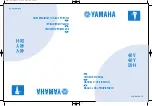
The
AZZA
U601 Mainboard Series
Page 30
Quick Power On Self Test
If enabled the amount of time required to run the power-on self-test (POST)
will decrease. A quick POST skips certain steps. We recommend that you dis-
able quick POST. It is better to find a problem during POST than to lose data
during your work.
First / Second / Third Boot Device
These fields allow you to decide the boot sequence of your bootable devices
such as Floppy Drive, Hard Drive, CD ROM...etc
Boot Other Device
When this field is enabled you will be able Boot your computer from a another
device, not your HDD or FDD.
Swap Floppy Drive
This field is effective only in systems with two floppy drives. When Enabled is
selected physical drive B is assigned to logical drive A, and physical drive A is
assigned to logical drive B.
Boot Up Floppy Seek
When enabled, the BIOS tests (seeks) floppy drives to determine whether they
have 40 or 80 tracks. Only 360-KB floppy drives have 40 tracks; drives with
720 KB, 1.2 MB, and 1.44 MB capacity all have 80 tracks. Very few modern
PCs have 40-track floppy drives so we therefore recommend that you set this
field to Disabled to save time.
Boot Up NumLock Status
This controls the state of the NumLock key when the system boots. This field is
toggled between On or Off. When it is on the numeric keypad generates num-
bers instead of controlling the cursor operations. When it is off the numeric
keypad controls cursor operations and does not generate numbers.
Gate A20 Option
Gate A20 is a signal that gives the system access to addresses higher than
A19. If you select Fast the chipset will control this signal. If you select normal
a pin in the keyboard controller will control the signal.
Typematic Rate Setting
The keyboard controller determines the rate at which the keystrokes from the
keyboard are repeated. If you enable this option then the typematic rate and
the typematic delay can be selected.
Managing the PC BIOS
















































